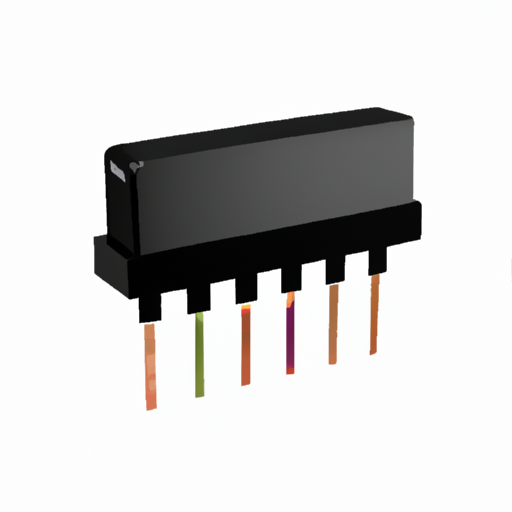

Title: A Comprehensive Guide to Signal Converter Components: Choosing the Right Class for Your Needs

1. Analog-to-Digital Converters (ADCs): Analog-to-Digital Converters are widely used to convert continuous analog signals into discrete digital representations. They are commonly found in applications such as data acquisition systems, audio processing, and sensor interfacing. When choosing an ADC, consider factors such as resolution, sampling rate, and input voltage range to ensure accurate and reliable conversion.
2. Digital-to-Analog Converters (DACs): Digital-to-Analog Converters perform the opposite function of ADCs, converting digital signals into analog outputs. DACs are essential in audio systems, video processing, and control systems. Key considerations when selecting a DAC include resolution, settling time, and output voltage range. Additionally, pay attention to the DAC's linearity and distortion characteristics for high-fidelity applications.
3. Voltage-to-Current Converters: Voltage-to-Current Converters, as the name suggests, convert voltage signals into corresponding current outputs. They find applications in industrial control systems, motor control, and analog signal conditioning. When choosing a voltage-to-current converter, factors such as input voltage range, output current range, and linearity are crucial. Additionally, consider the converter's ability to handle load variations and its thermal characteristics.
4. Current-to-Voltage Converters: Current-to-Voltage Converters perform the reverse function of voltage-to-current converters, converting current signals into voltage outputs. They are commonly used in transimpedance amplifiers, photodiode interfaces, and current sensing applications. Key considerations when selecting a current-to-voltage converter include input current range, output voltage range, and noise performance. Additionally, ensure that the converter's input impedance matches the source impedance for accurate signal conversion.
5. Frequency-to-Voltage Converters: Frequency-to-Voltage Converters are specialized signal converters that convert frequency signals into corresponding voltage outputs. They are commonly used in frequency measurement, tachometers, and speed control systems. When selecting a frequency-to-voltage converter, consider factors such as input frequency range, linearity, and output voltage range. Additionally, pay attention to the converter's response time and noise immunity for accurate frequency-to-voltage conversion.
6. Isolation Amplifiers: Isolation amplifiers are signal converters that provide electrical isolation between input and output signals. They are widely used in applications where galvanic isolation is required, such as medical devices, industrial control systems, and power electronics. When choosing an isolation amplifier, consider factors such as isolation voltage, bandwidth, and accuracy. Additionally, pay attention to the amplifier's common-mode rejection ratio (CMRR) and transient immunity for reliable signal isolation.
Conclusion: Selecting the right signal converter component class is crucial for ensuring seamless signal conversion and compatibility in electronic systems. By considering factors such as resolution, input/output ranges, linearity, and noise performance, you can make an informed decision. Whether you require an ADC, DAC, voltage-to-current converter, current-to-voltage converter, frequency-to-voltage converter, or isolation amplifier, understanding the specific requirements of your application will guide you towards the most suitable component class.
Title: A Comprehensive Guide to Signal Converter Components: Choosing the Right Class for Your Needs

1. Analog-to-Digital Converters (ADCs): Analog-to-Digital Converters are widely used to convert continuous analog signals into discrete digital representations. They are commonly found in applications such as data acquisition systems, audio processing, and sensor interfacing. When choosing an ADC, consider factors such as resolution, sampling rate, and input voltage range to ensure accurate and reliable conversion.
2. Digital-to-Analog Converters (DACs): Digital-to-Analog Converters perform the opposite function of ADCs, converting digital signals into analog outputs. DACs are essential in audio systems, video processing, and control systems. Key considerations when selecting a DAC include resolution, settling time, and output voltage range. Additionally, pay attention to the DAC's linearity and distortion characteristics for high-fidelity applications.
3. Voltage-to-Current Converters: Voltage-to-Current Converters, as the name suggests, convert voltage signals into corresponding current outputs. They find applications in industrial control systems, motor control, and analog signal conditioning. When choosing a voltage-to-current converter, factors such as input voltage range, output current range, and linearity are crucial. Additionally, consider the converter's ability to handle load variations and its thermal characteristics.
4. Current-to-Voltage Converters: Current-to-Voltage Converters perform the reverse function of voltage-to-current converters, converting current signals into voltage outputs. They are commonly used in transimpedance amplifiers, photodiode interfaces, and current sensing applications. Key considerations when selecting a current-to-voltage converter include input current range, output voltage range, and noise performance. Additionally, ensure that the converter's input impedance matches the source impedance for accurate signal conversion.
5. Frequency-to-Voltage Converters: Frequency-to-Voltage Converters are specialized signal converters that convert frequency signals into corresponding voltage outputs. They are commonly used in frequency measurement, tachometers, and speed control systems. When selecting a frequency-to-voltage converter, consider factors such as input frequency range, linearity, and output voltage range. Additionally, pay attention to the converter's response time and noise immunity for accurate frequency-to-voltage conversion.
6. Isolation Amplifiers: Isolation amplifiers are signal converters that provide electrical isolation between input and output signals. They are widely used in applications where galvanic isolation is required, such as medical devices, industrial control systems, and power electronics. When choosing an isolation amplifier, consider factors such as isolation voltage, bandwidth, and accuracy. Additionally, pay attention to the amplifier's common-mode rejection ratio (CMRR) and transient immunity for reliable signal isolation.
Conclusion: Selecting the right signal converter component class is crucial for ensuring seamless signal conversion and compatibility in electronic systems. By considering factors such as resolution, input/output ranges, linearity, and noise performance, you can make an informed decision. Whether you require an ADC, DAC, voltage-to-current converter, current-to-voltage converter, frequency-to-voltage converter, or isolation amplifier, understanding the specific requirements of your application will guide you towards the most suitable component class.